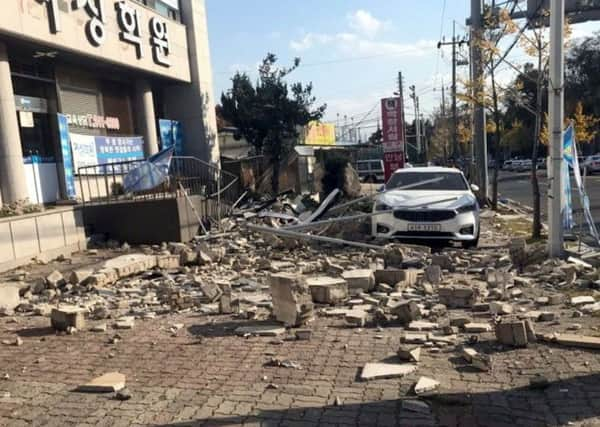Fracking caused 2017 earthquake, study finds


Fracking, or hydraulic fracturing, involves injecting liquid at high pressure into subterranean rocks to force open existing fissures, usually to release gas or oil trapped inside.
The technique was used between early 2016 and September 2017 at a site near the South Korean city of Pohang, in North Gyeongsang Province, as part of scheme to harness geothermal energy.
Advertisement
Hide AdAdvertisement
Hide AdThousands of cubic metres of water were injected into boreholes reaching depths of 4km during the works.
After analysing seismic data, scientists from Scotland, Switzerland and Germany have linked a magnitude 5.5 earthquake that occurred near Pohang in November 2017 with the drilling activities.
They say the closer an earthquake sequence is located to a geothermal site and to previous related seismic activity, as well as the sooner it happens after underground operations, the greater the chance it was caused by the works.
Dr Rob Westaway, senior research fellow at the University of Glasgow’s School of Engineering, who co-authored the study, said: “Our research is the first attempt to analyse how close the geological fault which slipped and caused the earthquake was to the points at which water was being injected for the hydraulic fracturing.
“What we found was that the fault was no more than a few hundred metres from the injection points, making it likely – in my view – that it was caused by the fluid injection.
“Work that has been done since then refines the geometry further, providing additional confirmation that the fault was indeed very close to the injection.”
Seismograms are usually unable to distinguish between induced and natural earthquakes, so the researchers also considered factors such as the location of tremors, their depths and underground stimulation activities.
They found the main shock and largest aftershocks were centred on an area less than 2km from the fracking site.
Advertisement
Hide AdAdvertisement
Hide AdThe findings suggest better methods are needed to predict the impact of fracking.
Dr Westaway said: “This earthquake was about 1,000 times larger, in terms of the energy released, than would be expected from standard theory given the volume of water injected.
“If it is ultimately shown to have been caused by the injection activity, the Pohang earthquake will call into question the current scaling relation as a fixed upper bound.”
The main shock and 46 aftershocks in November 2017 took place at depths of 3km to 7km – unusually shallow compared to previous natural events, but close to the injection depth.